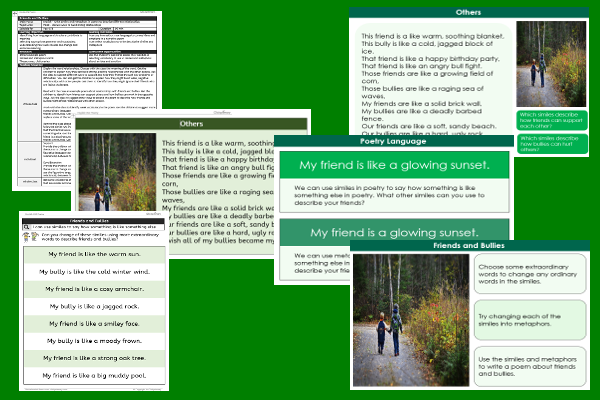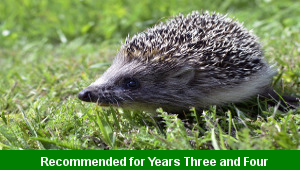Friends and Bullies

This English teaching pack for Key Stage Two gets the children to select and compose a range of figurative language using similes and metaphors in poetry to describe and illustrate different relationships between pairs of friends.
The class can identify and illustrate how to change figurative language to compare something to something else using example similes and metaphors in poetry.
Download this teaching pack including a lesson plan, classroom activities and an interactive presentation to select and compose a range of figurative language using similes and metaphors in poetry to describe and illustrate different relationships between pairs of friends
Activities in this teaching pack include a shared reading text to identify descriptive language used in a poem to describe ideas and emotions in a poem about relationships and a worksheet to edit and change similes and metaphors about relationships by selecting more powerful vocabulary.
The interactive presentation gets the children to explore how to write similes and metaphors in poetry to describe and illustrate different relationships.
This lesson is part of an English scheme of work to get the children to compose a selection of different types of poems using figurative language and poetry styles to illustrate relationships between friends and family members. There are teaching activities for shared learning, differentiated worksheets to support independent learning and interactive presentations to introduce concepts and key skills.
-

Rounding Hundreds
Explain and model how to round some different numbers to the nearest hundred based on the place values of the digits in each number
-

Rounding Tens
Identify and record how to round some different numbers to the nearest ten based on the place values of the digits in each number
-

Classic Animal Stories
Investigate the structure and content of classic works of fiction by significant authors with animals as the main characters
-

Cities, Towns and Villages
Research and present the history of a range of different buildings and people that are part of the local community using a school exhibition
